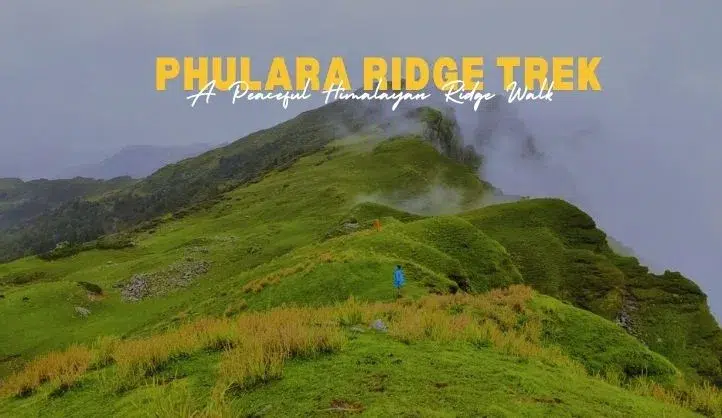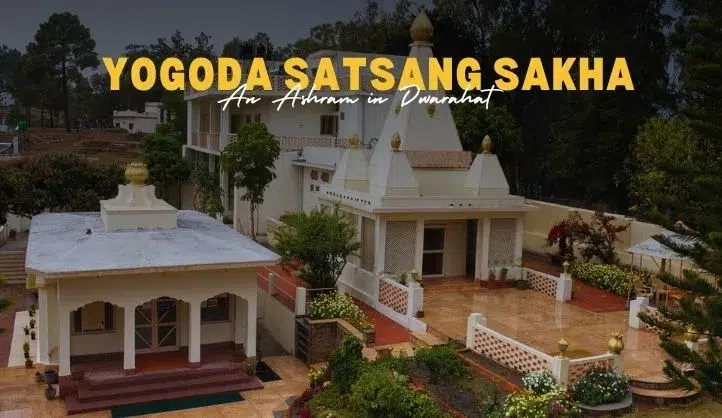“Embark on the breathtaking #PanwaliKanthaTrek 🏞️ Discover Himalayan wonders, meadows, & cultural gems in this unforgettable adventure! 🚶♂️🌄”
About of Panwali Kantha Trek
Panwali Kantha Trek is a captivating journey that takes trekkers through the enchanting landscapes of the Garhwal region in the Indian Himalayas. Known for its picturesque meadows, dense forests, and panoramic views, this trek offers a perfect blend of natural beauty and adventure.
The Panwali Kantha Trek is a remarkable expedition that takes trekkers on an exploration of the majestic Himalayas. This captivating journey guides adventurers through a diverse landscape, featuring verdant meadows, dense forests, and towering mountain peaks. The trek holds not only the allure of natural beauty but also significant cultural importance, as it passes through areas with historical significance and local traditions.
Trekkers can experience the thrill of high-altitude trekking, reaching elevations of around 12,000 feet, while being treated to awe-inspiring vistas at every turn. The route often begins from Chopta and continues through the iconic Tungnath Temple, the highest Shiva temple globally. The Panwali Kantha Trek is an opportunity to immerse oneself in the splendors of the Himalayas, combining adventure, spirituality, and natural grandeur into an unforgettable experience.
Historical Significance:
The history of the Panwali Kantha Trek is deeply intertwined with the cultural and historical heritage of the region. While the exact origins might be elusive, the trekking route was historically used by local shepherds and traders as a passage between the Tehri region and the Yamunotri region. The trail has served as a crucial trade route, fostering connections and exchanges between different communities over the years.
Key Points:
- Spectacular Scenery: The Panwali Kantha Trek unfolds amidst breathtaking scenery, encompassing lush green meadows, dense alpine forests, gushing streams, and majestic peaks. The trail showcases the diversity of the Garhwal Himalayas, providing trekkers with ever-changing vistas.
- Chopta and Tungnath: The trek often begins from Chopta, a picturesque hill station, and leads to Tungnath, the highest Shiva temple in the world. Tungnath holds immense religious significance and is an essential stop on the trek, attracting pilgrims and trekkers alike.
- Panwali Kantha Meadows: The trek reaches its zenith as trekkers ascend to the Panwali Kantha meadows. These expansive grasslands are adorned with vibrant flowers during the summer months, offering a postcard-perfect view of the surrounding peaks, including Bandarpoonch and Kedarnath.
- Wildlife Encounters: The region is home to diverse wildlife, including Himalayan musk deer, barking deer, and a variety of bird species. Trekkers might be fortunate enough to catch glimpses of these creatures as they traverse through the forests and meadows.
- Cultural Interactions: Apart from its natural wonders, the trek offers opportunities for cultural interactions with local villagers. Learning about their traditional way of life, cuisine, and customs adds a unique dimension to the trekking experience.
- Moderate Difficulty: The Panwali Kantha Trek is considered moderately challenging, making it suitable for both novice and experienced trekkers. The trail’s varying terrain and altitude changes require a reasonable level of physical fitness.
- Best Time to Trek: The ideal time to undertake this trek is during the months of May to June and September to November. These months provide pleasant weather and clear views, enhancing the overall trekking experience.
- Conservation Efforts: As the popularity of the trek increases, local authorities and trekking organizations emphasize responsible trekking practices. Minimizing environmental impact and preserving the delicate ecosystem of the Himalayas is a shared goal.
Why Panwali Kantha Trek is Famous:
The popularity of the Panwali Kantha Trek can be attributed to several remarkable factors that set it apart as a sought-after trekking destination:
- Scenic Grandeur: The trek offers awe-inspiring vistas, featuring lush meadows, dense forests, and towering peaks. The ever-changing landscapes create a visual feast for trekkers, captivating them at every step.
- High Altitude Experience: Reaching an elevation of approximately 12,000 feet, the trek provides trekkers with an opportunity to experience the thrill of high-altitude trekking without venturing into extremely challenging terrain.
- Religious Significance: The presence of the Tungnath Temple, the highest Shiva temple globally, adds a spiritual dimension to the trek. Pilgrims and devotees undertake the journey to this sacred site, enhancing the trek’s cultural allure.
- Panwali Kantha Meadows: The vast, flower-strewn meadows of Panwali Kantha present a stunning spectacle during the warmer months. This unique natural attraction draws photographers, nature enthusiasts, and trekkers seeking tranquility.
- Wildlife and Flora: The region’s diverse wildlife, including Himalayan deer and a variety of bird species, contributes to its allure. Trekkers get a chance to witness these creatures in their natural habitat, enhancing the immersive experience.
Things to Do on the Panwali Kantha Trek:
Engaging activities await trekkers on the Panwali Kantha route, enriching their overall adventure:
- Tungnath Temple Visit: Explore the historic Tungnath Temple, an architectural marvel and an integral part of the trek. Immerse yourself in the spiritual atmosphere and witness the stunning views from this sacred site.
- Photography: Capture the mesmerizing landscapes, from dense forests and gurgling streams to expansive meadows. Photography enthusiasts will find countless opportunities to frame natural beauty.
- Flora and Fauna Observation: Take leisurely breaks to observe the region’s diverse flora and fauna. Keep an eye out for rare Himalayan species that inhabit the forests and meadows.
- Camping: Enjoy the thrill of camping amidst the serene surroundings of Panwali Kantha. Camping under the starlit sky, surrounded by nature’s splendor, is an unforgettable experience.
- Interact with Locals: Engage with the local communities along the way, learning about their traditions, daily life, and customs. Such interactions add a cultural layer to the trekking adventure.
- Nature Walks: Embark on short nature walks during the trek to fully appreciate the finer details of the landscape. These walks offer a more intimate connection with nature.
- Stargazing: During clear nights, take the opportunity to marvel at the glittering expanse of the night sky. Away from city lights, the trek offers an excellent setting for stargazing.
- Responsible Trekking: Contribute to the preservation of the region by practicing responsible trekking. Minimize your impact on the environment and respect local guidelines.
Things to Know about Panwali Kantha Trek:
- Trek Duration: The Panwali Kantha Trek typically spans around 6 to 7 days, depending on the chosen route and pace.
- Best Time to Visit: The ideal periods for the trek are from May to June and September to November. These months offer pleasant weather and clear views.
- Difficulty Level: Considered moderately challenging, the trek is suitable for both novice and experienced trekkers. Adequate physical fitness and acclimatization are important.
- Altitude Considerations: The trek reaches an elevation of approximately 12,000 feet. Acclimatization stops are crucial to avoid altitude-related issues.
- Permits and Fees: Check local regulations for required permits and entry fees before starting the trek. These vary based on the trek’s starting point.
- Guided or Solo: While experienced trekkers might prefer going solo, first-timers are advised to choose a guided trek to ensure safety and proper navigation.
- Accommodation: Accommodation options range from camping to basic guesthouses along the trail. Camping adds an adventurous touch to the experience.
- Packing Essentials: Proper trekking gear, warm clothing, sturdy footwear, rain gear, first aid kit, and essential toiletries are must-pack items.
- Mobile Connectivity: Expect limited to no mobile network coverage along the trail. Inform your contacts about your trekking schedule beforehand.
How to Reach Panwali Kantha Trek:
Reaching the Panwali Kantha Trek involves specific travel routes:
- By Air:
- Nearest Airport: Jolly Grant Airport in Dehradun.
- From Dehradun, hire a taxi or use public transport to reach Chopta, a common starting point for the trek.
- By Train:
- Dehradun Railway Station is the nearest major railhead.
- After reaching Dehradun, proceed to Chopta via road.
- By Road:
- Chopta is well-connected by road to major cities in Uttarakhand.
- Buses and taxis ply regularly from cities like Dehradun, Rishikesh, and Haridwar to Chopta.
- Trekking Route:
- The trek often begins from Chopta and passes through Tungnath before reaching Panwali Kantha.
- The trail is marked and well-defined, with signposts guiding the way.
- Local Transport:
- Local taxis or shared jeeps can be hired from Chopta to reach Sari, the base for the Tungnath Temple trek.
- From Sari, the trek continues through Chopta and reaches Panwali Kantha.
- Trek Conclusion:
- The trek typically concludes at Chopta or a nearby village.
- Arrange for transportation in advance to return to the nearest city or railhead.
Travel Tips for Panwali Kantha Trek:
- Physical Fitness: Prior to the trek, engage in regular exercises to improve your stamina and endurance. Cardiovascular activities like jogging, cycling, and stair climbing are beneficial.
- Altitude Acclimatization: Acclimatize gradually to the increasing altitude to minimize the risk of altitude sickness. Plan for rest days during the trek for adjustment.
- Hydration: Stay well-hydrated throughout the trek. Drink water at regular intervals to prevent dehydration, but avoid excessive water intake to prevent discomfort.
- Packing Wisely: Pack lightweight and essential items, including warm clothing, trekking gear, rainwear, a first aid kit, and energy-rich snacks. Avoid over-packing to ensure comfortable trekking.
- Footwear: Invest in sturdy and comfortable trekking shoes with proper grip to navigate diverse terrains safely.
- Layering Clothing: Dress in layers to regulate body temperature effectively. Add or remove layers as needed during varying weather conditions.
- Sun Protection: Carry sunscreen, sunglasses, and a wide-brimmed hat to shield yourself from the strong Himalayan sun.
- Local Cuisine: Embrace the local cuisine for energy replenishment. Opt for hot meals and avoid consuming raw or uncooked food items.
- Environmental Responsibility: Follow the principles of Leave No Trace. Dispose of waste responsibly, and avoid damaging flora and fauna.
Best Time to Visit Panwali Kantha Trek:
Determining the optimal period for your Panwali Kantha adventure:
- Summer Season (May to June):
- Pleasant weather with moderate temperatures.
- Meadows adorned with vibrant wildflowers.
- Clear skies provide stunning views of the surrounding peaks.
- Post-Monsoon Season (September to November):
- Clear views after the monsoon.
- Crisp air and cooler temperatures.
- Ideal for those seeking fewer crowds and a tranquil trekking experience.
- Winter Season (December to February):
- Not recommended due to heavy snowfall and extreme cold.
- The trail might be inaccessible during this period.
Places to Eat Near Panwali Kantha Trek:
- Chopta:
- A starting point for the trek, Chopta offers local eateries serving simple North Indian dishes.
- Enjoy hot meals, including dal, rice, roti, and seasonal vegetables.
- Tungnath:
- As a significant stop on the trek, Tungnath has small tea stalls and vendors offering snacks like Maggi noodles and tea.
- Sari Village:
- The base for the Tungnath Temple trek, Sari Village has modest eateries with basic local fare and refreshments.
- Local Villages:
- Along the trek, encounter small settlements where locals may offer traditional meals and snacks on request.
Nearby Places to Panwali Kantha Trek:
- Ukhimath:
- A pilgrimage town close to Chopta, Ukhimath offers basic eating options serving North Indian cuisine.
- Rudraprayag:
- A major town on the route, Rudraprayag has a variety of restaurants offering Indian, Garhwali, and some Western dishes.
- Gopeshwar:
- This town features local dhabas and small eateries serving vegetarian and non-vegetarian meals.
- Chamoli:
- Chamoli offers more diverse dining choices, including roadside stalls, local eateries, and small restaurants.
- Joshimath:
- A larger town with better amenities, Joshimath has a range of eating establishments, including cafes and restaurants.
- Auli:
- Known for its ski resorts, Auli has dining options that cater to tourists, offering a mix of North Indian and international cuisines.
Conclusion:
In conclusion, the Panwali Kantha Trek offers an enchanting journey through the Himalayas, combining breathtaking landscapes, cultural experiences, and diverse activities. Whether you’re an adventure seeker, nature enthusiast, or a pilgrim, this trek provides a unique opportunity to explore the stunning beauty of the Garhwal region. With proper preparation, responsible trekking practices, and a spirit of exploration, you can create unforgettable memories on this captivating trail.
FAQ
Q1: What is the best time to do the Panwali Kantha Trek?
- A1: The best times are from May to June and September to November when the weather is pleasant, and clear views of the stunning landscapes can be enjoyed.
Q2: Is the Panwali Kantha Trek suitable for beginners?
- A2: Yes, the trek is moderately challenging and can be undertaken by both novice and experienced trekkers. Adequate physical fitness is recommended.
Q3: What is the highest point of the trek?
- A3: The Panwali Kantha Trek reaches an elevation of around 12,000 feet, providing trekkers with a high-altitude experience without extremely difficult terrain.
Q4: Are there any religious sites along the trek?
- A4: Yes, the Tungnath Temple, the highest Shiva temple in the world, is a significant religious site along the trek. It holds both spiritual and cultural importance.
Q5: How can I reach the starting point of the trek, Chopta?
- A5: Chopta is accessible by road from major cities in Uttarakhand. Buses and taxis operate from places like Dehradun, Rishikesh, and Haridwar.









